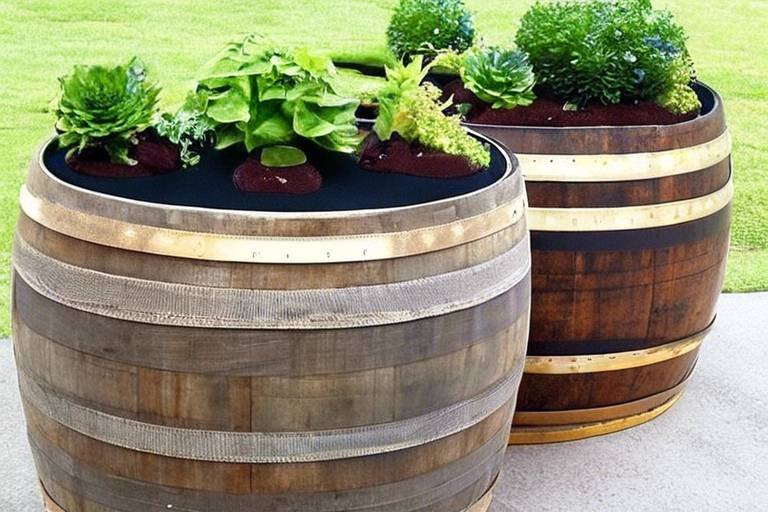Create Unique Pieces of Jewellery from Upcycled Materials
Have you ever thought about the incredible potential lying within discarded items? Imagine transforming that old bicycle chain or broken glass bottle into a stunning piece of jewellery that not only looks fabulous but also tells a story. In a world increasingly concerned with sustainability, the art of creating jewellery from upcycled materials is not just a trend; it’s a movement that celebrates creativity and environmental consciousness. By embracing this practice, you’re not only making a statement about your personal style but also contributing to a larger cause—reducing waste and promoting eco-friendly living.
Upcycling is all about taking what others see as trash and turning it into treasure. It’s like giving a second life to materials that would otherwise end up in a landfill. This process encourages us to think outside the box and tap into our creative instincts. Just think of it as a treasure hunt—each piece you find has the potential to become a unique accessory that reflects your personality. Whether it’s a vintage button, a piece of fabric from an old shirt, or even metal scraps, the possibilities are endless!
So, what makes upcycled jewellery so unique? For one, every piece is one-of-a-kind. No two items are ever the same, which adds to their charm. When you wear upcycled jewellery, you’re not just wearing an accessory; you’re wearing a story—your story. Each piece can evoke memories, represent personal experiences, or even reflect cultural heritage. Plus, with the growing demand for sustainable products, upcycled jewellery appeals to eco-conscious consumers who want to make responsible choices without sacrificing style.
Now, let’s dive deeper into the world of upcycled jewellery and explore the various materials you can use, the techniques to create stunning pieces, and the inspiration that can fuel your creativity. Whether you’re a seasoned jewellery maker or a curious beginner, there’s always something new to learn and discover in this fascinating realm. So grab your tools, unleash your imagination, and let’s embark on this creative journey together!
Upcycling is not just a creative outlet; it’s a crucial part of the sustainability movement. By transforming discarded materials into valuable items, we reduce waste and promote innovative thinking. This practice encourages artisans to think differently about resources and materials, leading to the creation of unique jewellery pieces that resonate with eco-conscious consumers.
When it comes to upcycled jewellery, the materials you can use are as diverse as your imagination. From metal scraps and broken glass to fabric remnants and plastic bottles, the options are endless. The key is to look at everyday items with a fresh perspective and see their potential. Here’s a quick overview of some materials you might consider:
- Metal Scraps: Old jewellery pieces, cutlery, or even hardware can be transformed into stunning metalwork.
- Glass: Broken bottles or old glass beads can be reshaped or combined to create eye-catching designs.
- Fabric: Vintage textiles or leftover fabric can be used for unique textile jewellery.
- Plastic: Items like bottle caps or old plastic containers can be creatively repurposed.
Inspiration for your upcycled jewellery can come from numerous sources. Nature, art, and personal experiences are just a few places to look. By tapping into these influences, you can create pieces that are not only beautiful but also meaningful.
Nature is a boundless source of inspiration. The organic shapes, vibrant colors, and textures found in the natural world can spark your creativity. Think about how you can incorporate elements like leaves, flowers, or even stones into your designs. This connection to nature not only enhances your pieces but also resonates with those who appreciate the beauty of the world around them.
Art and cultural heritage can significantly influence your jewellery design. By drawing from historical styles or artistic movements, you can create pieces that reflect personal or cultural narratives. Whether it’s a vintage style inspired by the 1920s or a modern twist on traditional craft techniques, the possibilities are limitless.
Crafting techniques play a vital role in transforming upcycled materials into beautiful jewellery. From soldering and weaving to assembling and painting, mastering these methods will allow you to bring your creative visions to life. Don’t be afraid to experiment and try new techniques—after all, creativity thrives on exploration!
Having the right tools is crucial for successful jewellery making. Essential equipment includes pliers, wire cutters, soldering tools, and a safe workspace. Setting up a creative space that inspires you can make all the difference in your crafting experience.
Safety should always be a priority when working with tools and materials. Make sure to wear protective gear and follow best practices to ensure a safe and enjoyable crafting experience.
To ensure the longevity of your upcycled jewellery, proper maintenance is essential. Regular cleaning, appropriate storage, and gentle care will keep your unique pieces looking their best for years to come.
Q: What is upcycled jewellery?
A: Upcycled jewellery is made from discarded materials that are transformed into new, valuable items, promoting sustainability and creativity.
Q: Where can I find materials for upcycled jewellery?
A: You can source materials from thrift stores, your own home, or local recycling centers. Look for items that can be creatively repurposed.
Q: Is upcycled jewellery durable?
A: Yes, when crafted properly, upcycled jewellery can be very durable. Using high-quality materials and techniques will ensure longevity.
Q: Can I sell my upcycled jewellery?
A: Absolutely! Many people appreciate the uniqueness and sustainability of upcycled jewellery, making it a great option for selling at markets or online.

The Importance of Upcycling
Upcycling is not just a trend; it's a transformative movement that breathes new life into discarded materials. Imagine taking something that would typically end up in a landfill and turning it into a stunning piece of jewellery. This process is about more than just creativity; it promotes sustainability and encourages innovative thinking. When artisans upcycle, they are not only reducing waste but also crafting unique jewellery pieces that resonate with eco-conscious consumers.
By embracing upcycling, we are actively participating in a solution to one of the most pressing issues of our time: waste management. Every year, millions of tons of materials are thrown away, contributing to environmental degradation. Upcycling helps to mitigate this by transforming these materials into valuable items that can be cherished and worn. It’s like turning trash into treasure! This practice not only reduces the demand for new materials but also fosters a culture of creativity and resourcefulness.
Moreover, upcycling allows for the creation of jewellery that tells a story. Each piece has a history, a background that adds character and depth. When you wear upcycled jewellery, you are not just accessorizing; you are making a statement about your values and your commitment to sustainability. This connection to the past can be incredibly powerful, as it connects the wearer to the broader narrative of environmental responsibility.
To illustrate the significance of upcycling, consider the following points:
- Environmental Impact: Upcycling reduces the amount of waste sent to landfills, lowering pollution and conserving natural resources.
- Creative Expression: It encourages artists and crafters to think outside the box, using their imagination to create one-of-a-kind pieces.
- Community Building: Upcycling can foster a sense of community, as people come together to share ideas, techniques, and materials.
In conclusion, the importance of upcycling in the jewellery-making process cannot be overstated. It represents a shift towards a more sustainable future, where creativity flourishes, and every piece of jewellery has a story to tell. By choosing to upcycle, you are not just making a fashion statement; you are contributing to a movement that values the planet and its resources. So, the next time you consider crafting a piece of jewellery, think about the potential of upcycled materials and the impact your choice can make.
Q1: What types of materials can be upcycled for jewellery?
A1: You can use a variety of materials including metal scraps, glass, fabric, and even plastic. The possibilities are endless!
Q2: How can I find inspiration for my upcycled jewellery designs?
A2: Inspiration can come from nature, art, culture, and personal experiences. Keep an open mind and observe your surroundings!
Q3: What tools do I need to start making upcycled jewellery?
A3: Essential tools include pliers, wire cutters, a soldering iron, and a workspace that allows for creativity and safety.
Q4: How do I maintain my upcycled jewellery?
A4: Regular cleaning, proper storage, and gentle handling will help ensure your pieces remain beautiful for years to come.
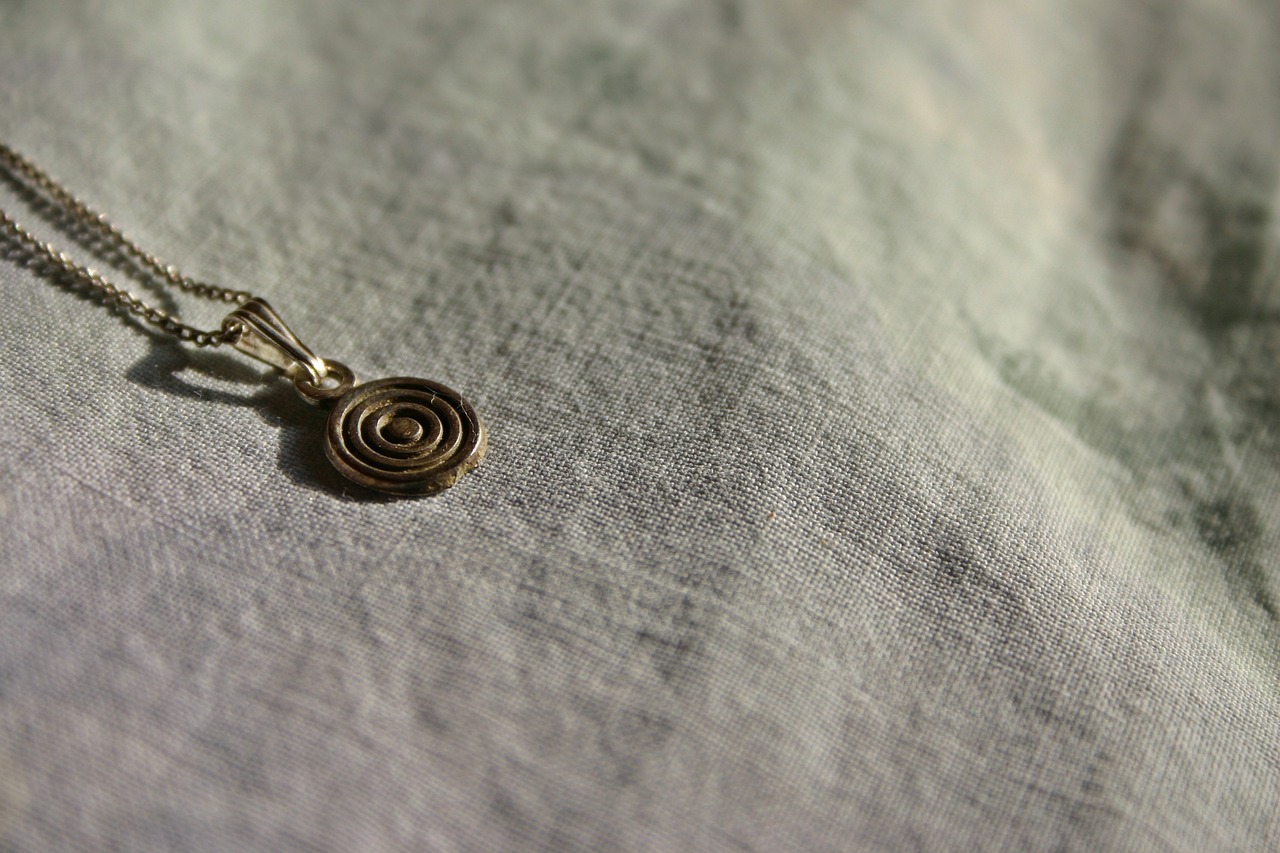
Materials for Upcycled Jewellery
When it comes to creating stunning upcycled jewellery, the choice of materials can make all the difference. The beauty of upcycling lies in its ability to breathe new life into items that might otherwise end up in landfills. Imagine transforming a mundane piece of scrap metal or a forgotten piece of glass into a breathtaking necklace or a pair of earrings that tell a unique story. The possibilities are endless, and the materials are often right under your nose! From metal scraps to fabric remnants, let's explore some fantastic options that can be repurposed into exquisite accessories.
One of the most popular materials for upcycled jewellery is metal scraps. These can come from old electronics, broken jewellery, or even discarded household items. Sourcing these materials not only helps reduce waste but also allows you to incorporate a variety of textures and finishes into your designs. For instance, you might find a beautiful old spoon that can be hammered into a pendant or a rusty piece of machinery that can be transformed into an edgy bracelet. The key is to look beyond the obvious and envision the potential in each piece.
Another fantastic material to consider is glass. Whether it's shards from a broken bottle or leftover pieces from a glass crafting project, glass can add a touch of elegance and color to your jewellery. You can create stunning mosaic-style pieces or even polish the edges of glass fragments to make them safe for wearing. The play of light through transparent or translucent glass can create a mesmerizing effect, making your creations truly one-of-a-kind.
Don’t overlook fabric as a valuable resource for upcycled jewellery. Old clothes, linens, or even fabric scraps can be transformed into beautiful textile jewellery. Think about braiding strips of fabric into a unique bracelet or sewing together small pieces to create a statement necklace. This approach not only adds softness and texture to your designs but also allows you to incorporate patterns and colors that reflect your personal style.
Lastly, plastic is another material that can be creatively repurposed. With the growing concern over plastic waste, using discarded plastic items in your jewellery can send a powerful message about sustainability. You can cut and shape plastic containers or even use old credit cards to create funky earrings or pendants. The vibrant colors and versatility of plastic can add a playful element to your designs, making them appealing to a wide audience.
When sourcing these materials, consider visiting local thrift stores, flea markets, or even your own home for items that can be upcycled. You might be surprised at what you can find! Additionally, joining online communities or social media groups focused on upcycling can provide inspiration and ideas for sourcing materials. Remember, the goal is to create something beautiful while being mindful of our planet.
In summary, the materials you choose for your upcycled jewellery can greatly influence the final outcome. From metal scraps to glass, fabric, and plastic, each material has its unique charm and potential. So, gather your supplies, unleash your creativity, and start crafting pieces that not only look good but also do good for the environment!
- What is upcycled jewellery? Upcycled jewellery is created from discarded materials, transforming them into new and unique accessories.
- Where can I find materials for upcycled jewellery? You can find materials at thrift stores, flea markets, and even in your own home. Look for items that can be creatively repurposed.
- Is upcycled jewellery sustainable? Yes, upcycled jewellery promotes sustainability by reducing waste and encouraging the creative reuse of materials.
- How can I ensure the quality of my upcycled jewellery? Focus on selecting durable materials and follow proper crafting techniques to ensure your pieces are long-lasting.
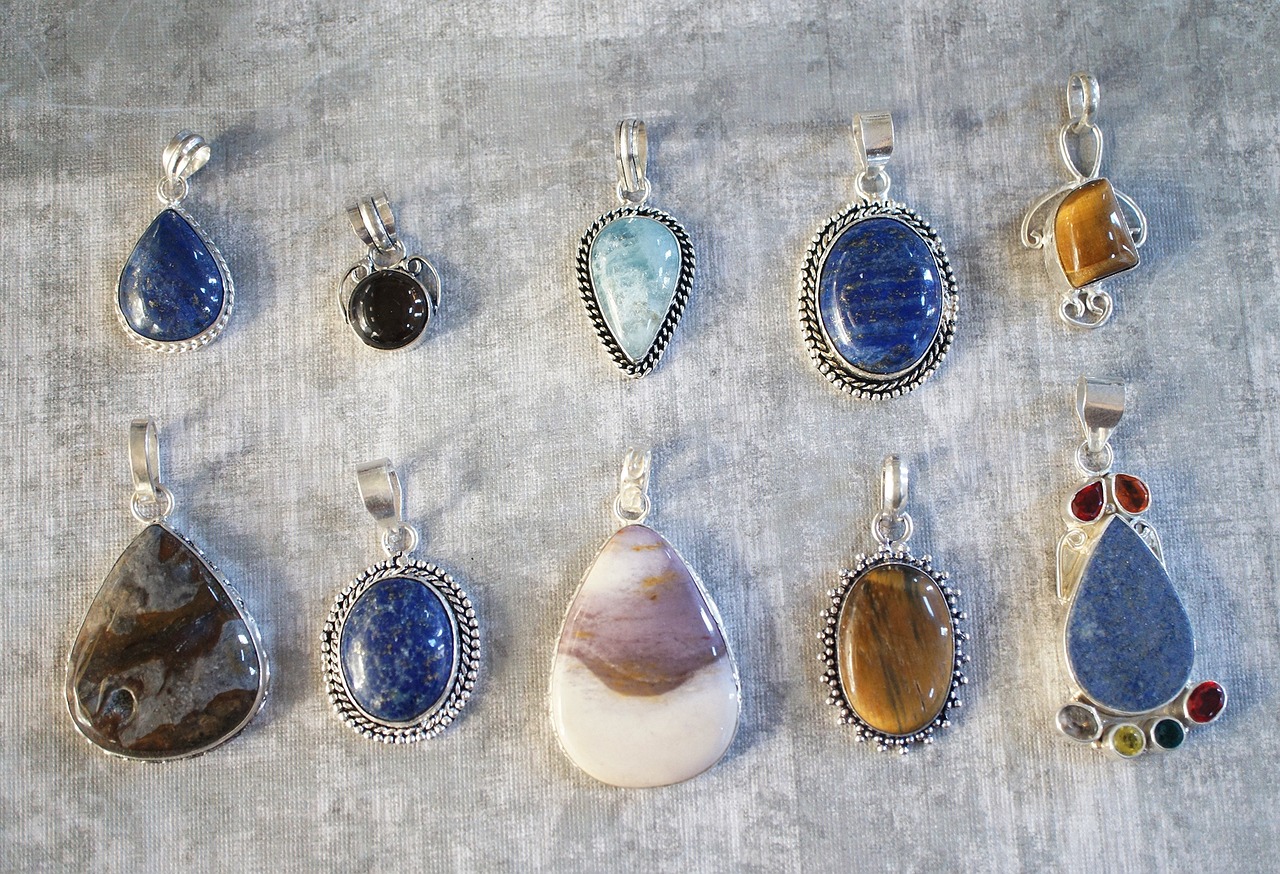
Finding Inspiration
When it comes to creating unique pieces of jewellery, inspiration can strike from the most unexpected places. Think of inspiration as a treasure hunt; you never know what you might find if you keep your eyes open! Whether it’s a walk in the park, a visit to an art gallery, or even a simple moment of reflection, the world around you is brimming with ideas just waiting to be transformed into stunning jewellery. But how do you harness these influences effectively? Let’s dive into some of the most enriching sources of inspiration.
One of the most profound sources of inspiration is nature. The organic shapes, vibrant colors, and intricate patterns found in the natural world can spark incredible ideas for your upcycled creations. Imagine the beautiful curves of a leaf or the delicate symmetry of a flower—these elements can be translated into jewellery designs that are not only visually appealing but also carry a deeper connection to the environment. For instance, you might collect fallen leaves or petals and use them as molds for resin pieces, capturing their essence in a wearable form.
Another fascinating source of inspiration is art and culture. Historical styles and artistic movements can provide a rich backdrop for your designs. Think about the elegance of Art Deco or the whimsical nature of bohemian styles. By studying these influences, you can create pieces that tell a story or reflect a particular cultural narrative. For example, you could take inspiration from traditional beadwork and incorporate it into your upcycled jewellery, blending modern techniques with cultural heritage.
Additionally, don’t underestimate the power of personal experiences. Your own life journey, memories, and emotions can serve as a wellspring of inspiration. Perhaps a cherished memory of a family heirloom has sparked an idea for a new piece, or maybe a significant life event has led you to explore themes of resilience and transformation in your designs. By infusing your creations with personal touches, you not only make them unique but also create a connection that resonates with others.
In the quest for inspiration, it’s also beneficial to keep a sketchbook or a digital note on your phone. Jot down ideas, doodle designs, or even collect images that inspire you. This practice can help you refine your thoughts and create a visual library of concepts to draw from when you sit down to craft your jewellery. Remember, inspiration is everywhere; it’s all about how you choose to see it!
In summary, finding inspiration for upcycled jewellery is a multifaceted journey. By exploring nature, delving into art and culture, and reflecting on your personal experiences, you can unlock a treasure trove of ideas that will help you create pieces that are not only beautiful but also meaningful. So, the next time you find yourself in need of inspiration, take a moment to look around—you might just discover the perfect spark for your next unique creation!
- What materials can I use for upcycled jewellery? You can use a variety of materials such as metal scraps, glass, fabric, and plastic. The key is to think creatively about how to repurpose these items.
- How do I ensure my jewellery is safe to wear? Always check for sharp edges and ensure that any materials used are non-toxic. Additionally, consider using a sealant for items that may not be inherently safe.
- Can I sell my upcycled jewellery? Absolutely! Many consumers are looking for unique, sustainable pieces. Just make sure to promote the story behind your creations.
- How can I maintain my upcycled jewellery? Regular cleaning, proper storage, and avoiding exposure to harsh chemicals will help keep your pieces looking their best.
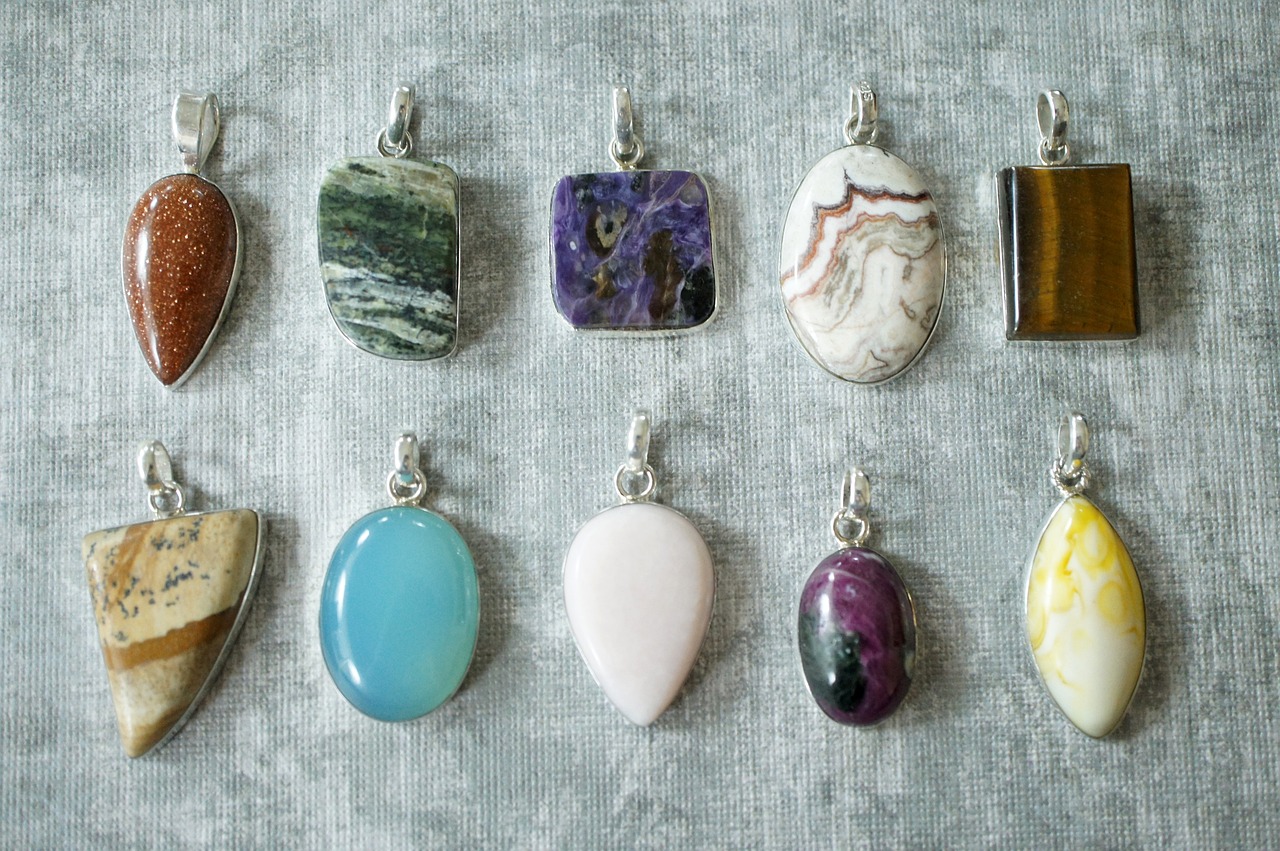
Nature as a Muse
When it comes to finding inspiration for your upcycled jewellery, nature can be one of the most profound sources. Just think about it: the world around us is bursting with colors, shapes, and textures that can spark creativity in the most unexpected ways. From the intricate patterns on a leaf to the vibrant hues of a sunset, nature offers an endless palette for your artistic endeavors. Have you ever noticed how the delicate curves of a flower petal can resemble the design of a pendant? This connection between nature and jewellery design is not only beautiful but also deeply meaningful.
Incorporating elements from the natural world into your jewellery can create pieces that tell a story, reflecting the beauty and complexity of the environment. Here are a few ways to draw inspiration from nature:
- Colors: The vibrant colors found in flowers, birds, and landscapes can inspire your choice of materials and gemstones. Consider using natural dyes or paints to achieve those stunning shades.
- Textures: The roughness of bark, the smoothness of pebbles, or the fluidity of water can inform the textures of your jewellery. Experimenting with different materials can help you replicate these natural textures.
- Shapes: Organic shapes found in nature, like the spirals of shells or the jagged edges of rocks, can guide your design process. Try to mimic these forms in your jewellery to create a more organic feel.
Moreover, using upcycled materials that reflect natural elements can enhance the narrative of your pieces. For instance, incorporating glass that mimics the colors of the ocean or beads made from recycled wood can connect your jewellery directly to the environment. This not only makes your creations more unique but also resonates with eco-conscious consumers who appreciate sustainability.
As you embark on your creative journey, take a moment to step outside. Observe the world around you. Whether it's the rustling of leaves in the wind or the intricate dance of a butterfly, let these experiences fuel your imagination. Nature has a way of calming the mind and sparking creativity, allowing you to create jewellery that is not just an accessory but a piece of art that embodies the essence of the world.
Q: How can I incorporate natural elements into my upcycled jewellery?
A: You can use natural colors, textures, and shapes found in the environment as inspiration. Consider using materials like stones, shells, or even plant-based dyes to reflect these elements.
Q: What are some eco-friendly materials I can use for upcycled jewellery?
A: Look for materials such as metal scraps, old jewelry pieces, glass bottles, fabric scraps, and even natural items like wood or seeds that can be creatively transformed into beautiful jewellery.
Q: Is it difficult to work with upcycled materials?
A: It can be a bit challenging at first, but with practice and the right techniques, you can learn to work with various materials effectively. The key is to experiment and have fun with the process!
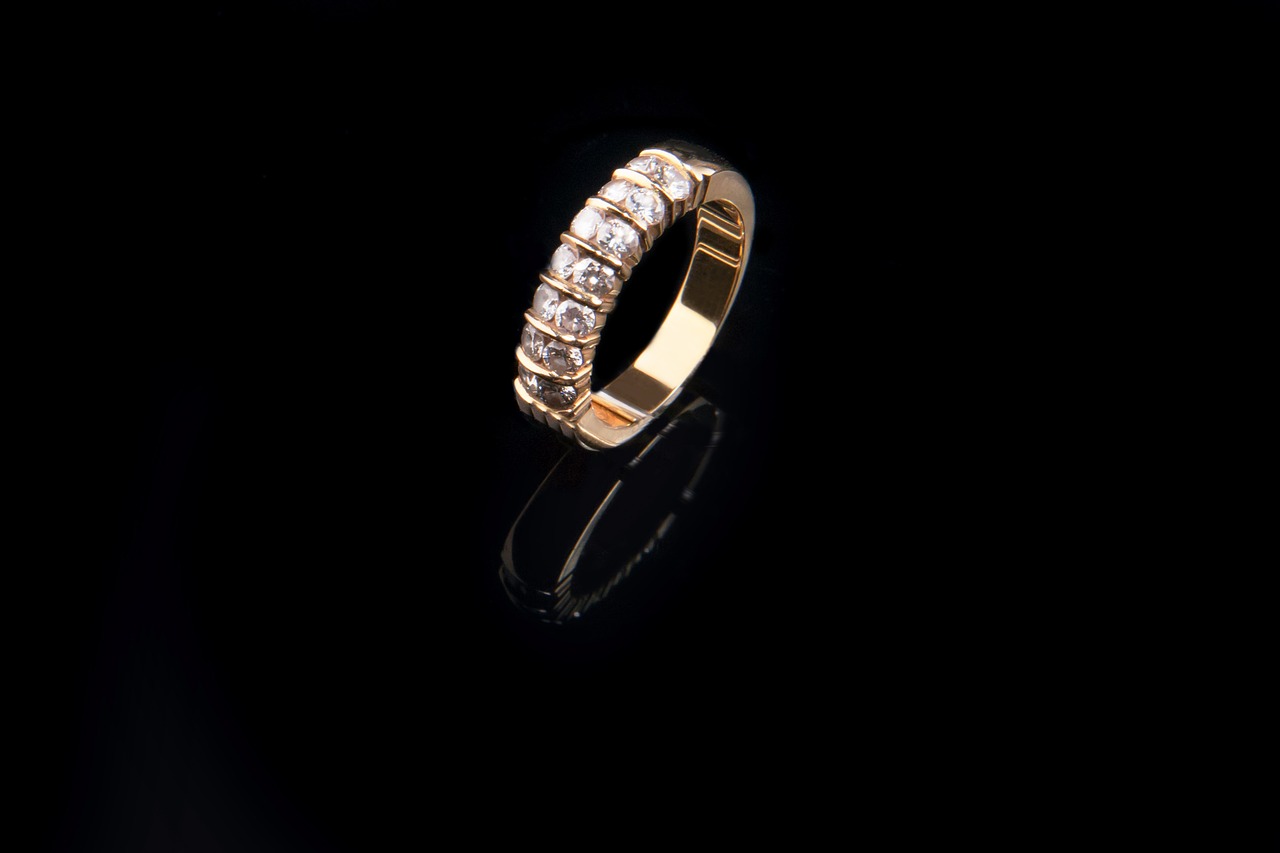
Art and Culture
Art and culture are like the vibrant threads woven into the fabric of society, and they play a crucial role in the world of jewellery design. When creating upcycled pieces, drawing inspiration from historical styles and artistic movements can add depth and meaning to your creations. Imagine taking a discarded item and infusing it with the essence of a bygone era or a cultural narrative that speaks to your personal experiences. This is where the magic happens!
Consider how different cultures have unique symbols and motifs that tell their stories. For instance, Indigenous art often features intricate patterns and natural elements that reflect a deep connection to the earth. By incorporating such elements into your jewellery, you not only pay homage to these cultures but also create pieces that resonate with those who appreciate their beauty and significance. This approach creates a bridge between the past and present, allowing your jewellery to tell a story that transcends time.
Moreover, you can explore various artistic movements, such as Art Deco or Bauhaus, which are characterized by distinct styles and philosophies. The bold geometric shapes of Art Deco can inspire modern designs, while the simplicity and functionality of Bauhaus can lead to minimalist yet striking pieces. When you upcycle materials, think about how these influences can transform ordinary objects into extraordinary works of art.
As you embark on your creative journey, here are a few tips to help you draw inspiration from art and culture:
- Research: Dive into art history books, visit museums, or explore online galleries to discover styles that resonate with you.
- Observe: Take a walk in your neighborhood and observe the architecture, colors, and textures around you. Nature and urban environments can spark incredible ideas.
- Connect: Engage with local artists or cultural communities to learn about their practices and stories. This can provide fresh perspectives and inspiration.
Incorporating these elements into your upcycled jewellery not only enhances the aesthetic appeal but also creates a meaningful connection with the wearer. Each piece becomes a conversation starter, a way to share stories and celebrate the beauty of diversity. So, let your creativity flow and embrace the rich tapestry of art and culture in your jewellery-making journey!
Q: What materials are best for upcycled jewellery?
A: You can use a variety of materials such as metal scraps, old jewellery pieces, glass, fabric, and even plastic. The key is to choose items that inspire you and can be creatively transformed.
Q: How can I ensure my upcycled jewellery is unique?
A: To create unique pieces, draw inspiration from personal experiences, nature, and cultural art. Incorporating your style and story into your designs will set your jewellery apart.
Q: What tools do I need to start making upcycled jewellery?
A: Basic tools include pliers, wire cutters, a soldering iron, and a workbench. As you advance, you can invest in more specialized tools based on your crafting techniques.
Q: How do I maintain my upcycled jewellery?
A: To keep your jewellery looking its best, store it in a cool, dry place, clean it gently with a soft cloth, and avoid exposure to harsh chemicals or moisture.
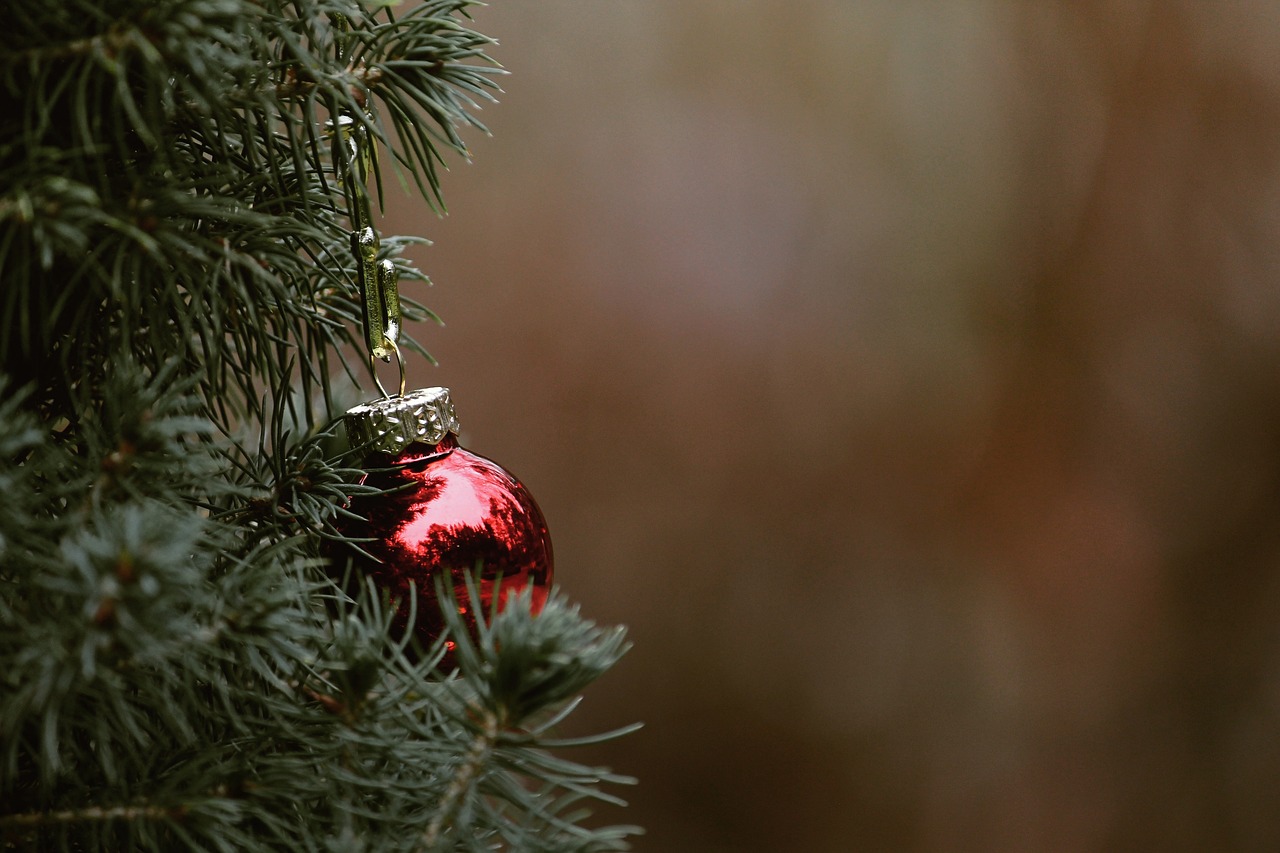
Techniques for Crafting
Crafting unique jewellery from upcycled materials is not just an art; it’s a rewarding journey that allows you to express your creativity while being kind to the planet. The techniques you choose can make a world of difference in the final piece, transforming mundane items into stunning accessories. Let’s dive into some essential techniques that will elevate your crafting game!
One of the most popular methods is soldering. This technique involves melting a filler metal to join pieces together, creating a strong bond that can withstand the test of time. Soldering is particularly useful when working with metal scraps, as it allows you to create intricate designs that would be impossible to achieve otherwise. Imagine turning old silverware into a beautiful bracelet or pendant! However, it's crucial to have the right tools, including a soldering iron, flux, and solder, to ensure a successful outcome.
Another fascinating technique is weaving. This method can be used with various materials, such as fabric strips or wire, to create beautiful textures and patterns. Weaving can evoke a sense of nostalgia, reminding us of traditional crafts passed down through generations. For instance, you can repurpose old denim into a chic necklace or earrings, combining style with sustainability. The beauty of weaving lies in its versatility; you can experiment with different materials and patterns to find what resonates with your personal style.
Assembling is yet another technique that opens a world of possibilities. This method involves putting together various components to create a cohesive piece. Think of it as a puzzle where each piece tells a story. You can combine beads, buttons, and other trinkets that you’ve collected over time. This approach not only allows for creativity but also gives each piece a unique narrative. For example, using a vintage button as a focal point can add a touch of history to your jewellery, making it even more special.
In addition to these techniques, it’s essential to consider the finishing touches. Techniques like polishing and coating can enhance the beauty of your creations. Polishing can bring out the shine in metals, while coatings can protect your jewellery from tarnishing and wear. A simple polish can make an old, dull piece look brand new again, adding to its allure.
To summarize, the techniques you choose in crafting upcycled jewellery can significantly influence the final product. Whether it’s soldering for strength, weaving for texture, or assembling for storytelling, each method allows you to express your creativity in unique ways. Remember, the journey of crafting is just as important as the final piece, so enjoy the process and let your imagination run wild!
- What materials are best for upcycled jewellery?
Common materials include metal scraps, glass, fabric, and plastic. The key is to choose items that inspire you and can be creatively transformed.
- Do I need special tools to get started?
While basic tools like pliers and wire cutters are essential, techniques like soldering will require specific tools. Start simple and expand as you become more comfortable.
- How can I ensure my upcycled jewellery lasts?
Proper maintenance is crucial. Clean your pieces regularly and store them in a safe place to prevent damage.
- Can I sell my upcycled jewellery?
Absolutely! Many consumers are looking for unique and sustainable products. Consider setting up an online shop or participating in local craft fairs.
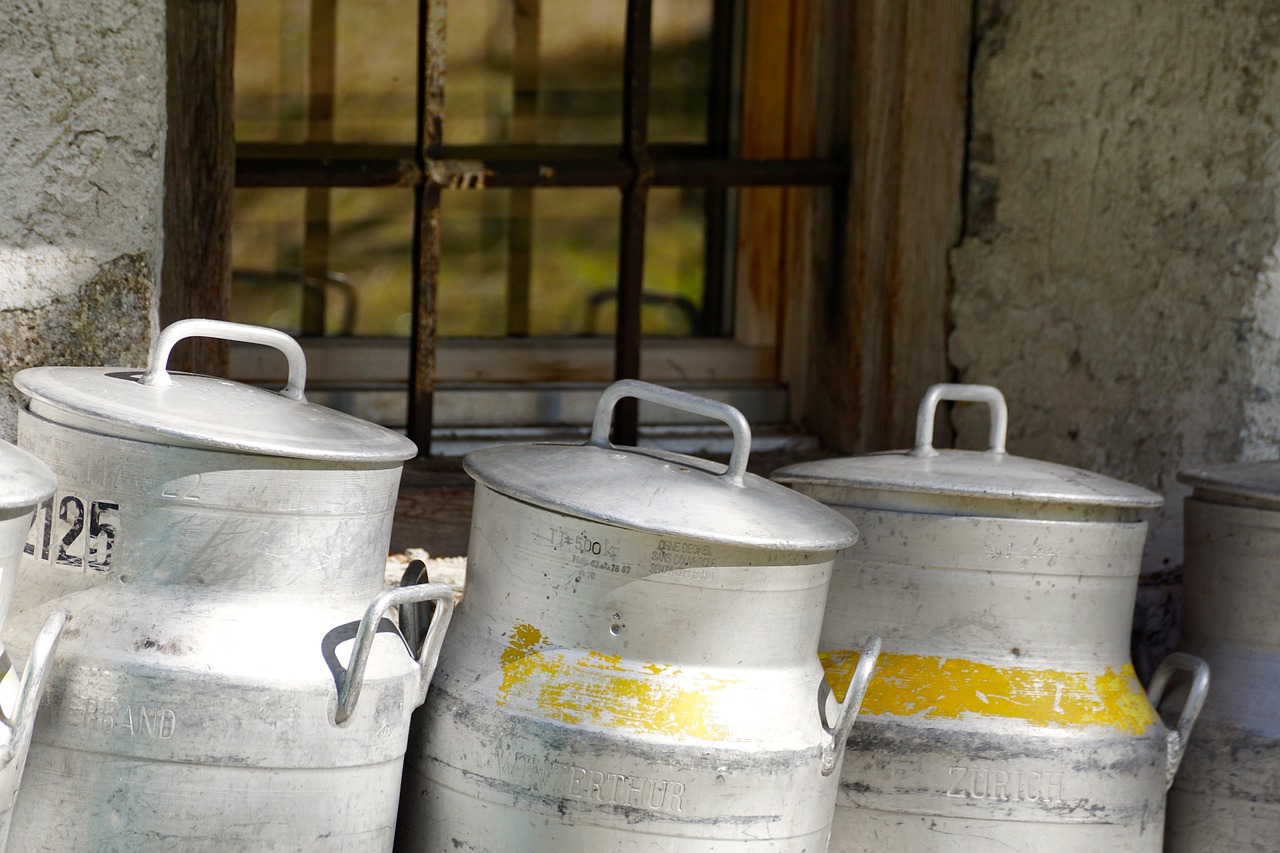
Tools and Equipment
When it comes to crafting stunning pieces of upcycled jewellery, having the right is essential. Think of your tools as the paintbrushes of an artist; they can make all the difference in achieving your creative vision. Whether you are a seasoned jewellery maker or a curious beginner, investing in quality tools can elevate your crafting experience and the final product.
At the very core of your toolkit, you'll find a few indispensable items that will help you transform your upcycled materials into wearable art. These include:
- Pliers: A good set of pliers is crucial. You'll need round-nose pliers for creating loops, flat-nose pliers for gripping and bending, and wire cutters for trimming materials.
- Jewellery Saw: Perfect for cutting metal, a jewellery saw allows for precision and intricate designs.
- Files: Files are essential for smoothing edges after cutting, ensuring that your pieces are comfortable to wear.
- Drill: A small drill can help you create holes in various materials, making it easier to assemble your jewellery.
In addition to these basics, consider setting up a comfortable and organized workspace. A well-lit area with a sturdy table can make a world of difference. You might also want to invest in a magnifying glass or a lighted magnifier to help you see your work more clearly, especially when dealing with tiny components.
Moreover, don't overlook the importance of storage solutions. Keeping your materials organized not only saves time but also sparks creativity. Use small containers or drawer organizers to sort your upcycled materials by type, color, or size. This way, when inspiration strikes, you can easily access what you need without rummaging through a chaotic mess.
Lastly, remember that safety is paramount. Always wear protective eyewear when cutting or drilling materials, and consider using gloves to protect your hands from sharp edges or splinters. By prioritizing safety, you can focus on what you love: creating unique, beautiful jewellery pieces that tell a story.
Q: What are the best materials for beginners to start with?
A: Beginners might find it easier to start with softer materials like fabric, beads, or plastic, as they are easier to manipulate and require less specialized tools.
Q: How can I ensure my upcycled jewellery lasts?
A: Proper maintenance is key. Store your pieces in a cool, dry place, clean them regularly with a soft cloth, and avoid exposing them to harsh chemicals.
Q: Where can I find upcycled materials?
A: You can find upcycled materials at thrift stores, garage sales, or even your own home! Look for old jewellery, fabric scraps, or glass bottles that can be repurposed.
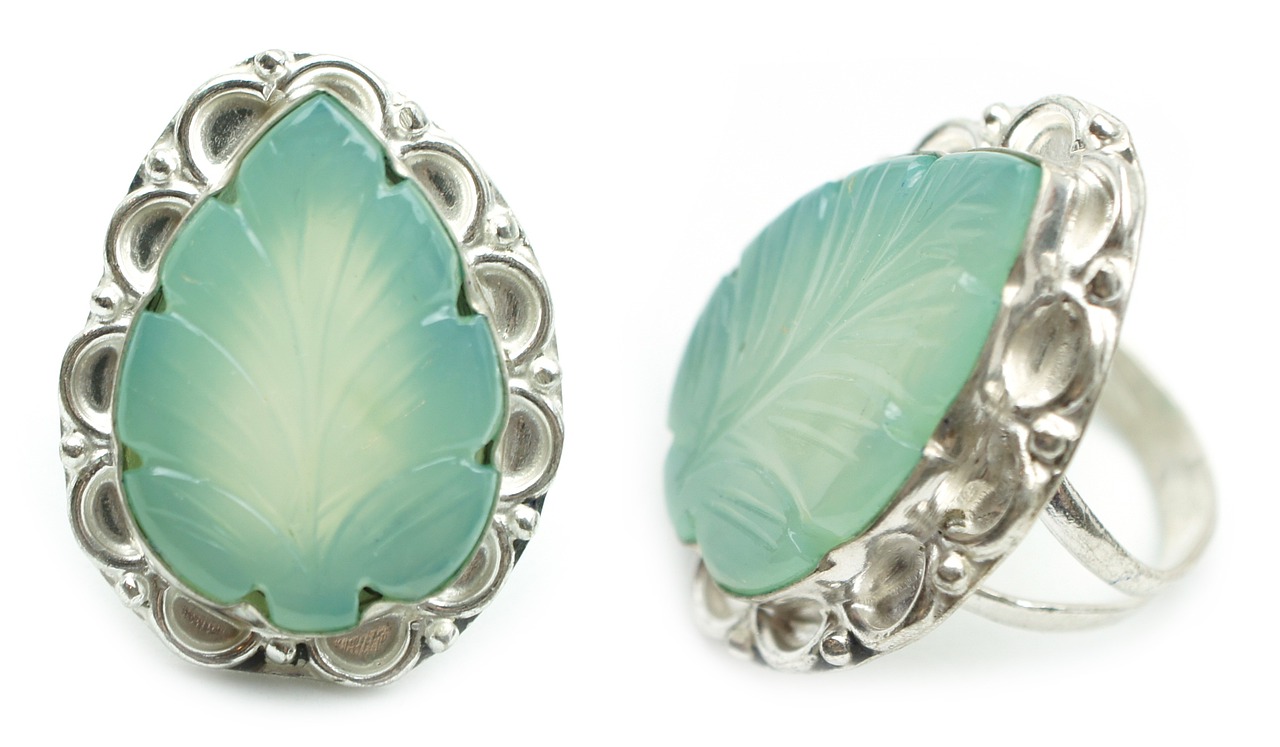
Safety Considerations
When diving into the world of creating upcycled jewellery, safety should always be at the forefront of your mind. Whether you’re wielding sharp tools or working with potentially hazardous materials, being aware of your surroundings and taking necessary precautions can make the difference between a fun crafting session and a trip to the emergency room. First and foremost, it’s important to wear appropriate safety gear. This includes gloves to protect your hands from sharp edges and splinters, and goggles to shield your eyes from dust and flying debris. Remember, your hands are your most valuable tools, so treat them with care!
Additionally, ensure that your workspace is well-lit and organized. A cluttered area can lead to accidents, so keep your tools and materials neatly arranged. If you’re working with power tools, make sure to read the instructions carefully and follow all safety guidelines. It’s also wise to have a first aid kit handy, just in case of minor injuries like cuts or scrapes. After all, you never know when a rogue piece of metal might decide to take a detour!
Another crucial aspect of safety is being mindful of the materials you are using. Some upcycled items, like old electronics or certain plastics, may contain harmful substances. Always do your research on the materials you source and check for any potential risks. If you’re unsure, consult with professionals or refer to online resources that provide guidance on safe crafting practices. Remember, it’s better to be safe than sorry!
Lastly, consider the importance of ventilation, especially if you’re using adhesives or paints that may emit fumes. Working in a well-ventilated area will help you avoid inhaling any harmful substances. If you can, try to work outdoors or in a space with good air circulation. Keeping these safety considerations in mind will not only enhance your crafting experience but also ensure that you can continue to create beautiful pieces of jewellery without any hiccups.
Now that we've covered safety considerations, let’s address some common questions that often arise when creating upcycled jewellery:
- What types of materials are safe to use for upcycled jewellery? - Generally, materials like metal scraps, fabric, and glass are safe. Avoid using items that may contain toxic substances, such as certain plastics or electronics.
- Do I need special tools for working with upcycled materials? - While basic tools like pliers and cutters are essential, you may need specific tools depending on the materials you choose. Always research the requirements for your particular project.
- How can I ensure my workspace is safe? - Keep your workspace organized, well-lit, and free from clutter. Always wear safety gear and keep a first aid kit nearby.
- What should I do if I get injured while crafting? - For minor injuries, clean the wound and apply a bandage. For more serious injuries, seek medical attention immediately.
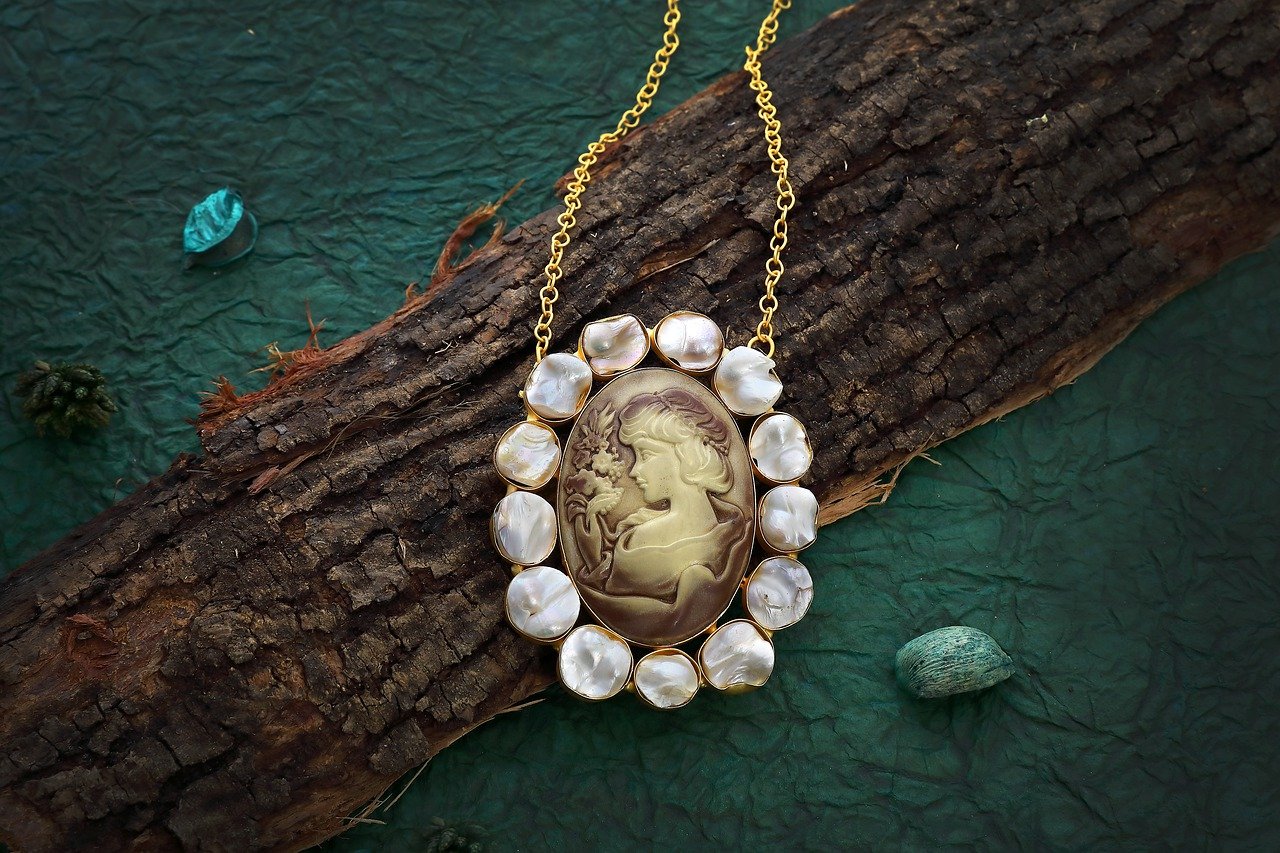
Maintaining Your Creations
Once you've poured your heart and soul into creating unique pieces of upcycled jewellery, it’s essential to ensure they remain as stunning as the day you crafted them. Just like a cherished memory, your jewellery deserves to be preserved and cared for. So, how do you maintain these beautiful creations? Here are some key practices to keep in mind.
First and foremost, regular cleaning is vital. Over time, dirt and oils from your skin can accumulate on your jewellery, dulling its shine. To clean your pieces, use a soft cloth to gently wipe them down after each wear. For a deeper clean, you can use a mild soap solution. Soak your jewellery in warm, soapy water for a few minutes and then use a soft brush to remove any stubborn grime. Rinse thoroughly and dry completely with a soft cloth. This simple ritual not only keeps your jewellery looking fresh but also helps you connect with each piece, reminding you of the story behind its creation.
Storage is another crucial factor in maintaining your upcycled jewellery. Proper storage can prevent scratches, tangles, and tarnishing. Consider using a jewellery box with individual compartments or soft pouches to keep each piece separated. If you have pieces made from delicate materials, such as fabric or glass, ensure they are stored in a way that minimizes movement and friction. A simple tip is to wrap each item in a soft cloth before placing it in your storage box. This added layer of protection can work wonders in preserving the beauty of your creations.
Additionally, be mindful of the environments your jewellery is exposed to. Avoid wearing your pieces while swimming, showering, or exercising, as exposure to water and sweat can damage certain materials. If your jewellery features elements like wood or fabric, these can be particularly sensitive to moisture. Think of your jewellery like a delicate flower; it thrives when cared for and protected from harsh conditions.
Lastly, consider regular inspections. Just like you would check in on a friend, check in on your jewellery! Look for any signs of wear or damage, such as loose beads or frayed threads. If you notice anything amiss, don’t hesitate to repair it right away. A small stitch here or a quick re-glue there can extend the life of your treasured pieces significantly. Remember, maintaining your creations is not just about preserving their physical beauty; it’s about honoring the creativity and effort that went into making them.
To help you further in your journey of maintaining your upcycled jewellery, here are some frequently asked questions:
- How often should I clean my jewellery? It's a good practice to clean your jewellery after each wear, especially if you've been using it frequently.
- Can I use regular cleaning products on my upcycled jewellery? Avoid harsh chemicals. Stick to mild soap and water for cleaning to prevent damage.
- What’s the best way to store my jewellery? Store each piece separately in a soft pouch or a compartmentalized jewellery box to avoid scratches.
- How can I repair minor damages? For minor repairs, you can use a strong adhesive for loose components or a needle and thread for fabric pieces.
Frequently Asked Questions
- What is upcycled jewellery?
Upcycled jewellery refers to unique pieces crafted from discarded or unused materials, transforming them into beautiful accessories. This creative process not only reduces waste but also promotes sustainability, allowing artisans to tell stories through their designs.
- What materials can I use for upcycled jewellery?
You can use a wide array of materials for upcycled jewellery, including metal scraps, old glass, fabric remnants, and even plastic items. The key is to look for materials that can be creatively repurposed into something new and beautiful, giving them a second life.
- Where can I find inspiration for my designs?
Inspiration can come from everywhere! Nature, art, and personal experiences are fantastic sources. For instance, the organic shapes and colors found in nature can spark unique ideas, while historical art movements can influence your design style.
- What techniques should I learn for crafting upcycled jewellery?
There are several techniques that can enhance your crafting skills, such as soldering, weaving, and assembling. Each method allows you to manipulate materials in different ways, helping you create stunning pieces that reflect your personal style.
- What tools do I need to start making upcycled jewellery?
Essential tools include pliers, wire cutters, soldering equipment, and a workbench. Having the right tools will make your crafting experience smoother and more enjoyable, allowing you to focus on your creativity.
- How can I ensure safety while crafting?
Safety is paramount when working with tools and materials. Always wear protective gear, such as gloves and goggles, and be mindful of your workspace. Familiarize yourself with your tools and follow best practices to avoid accidents.
- How do I maintain my upcycled jewellery?
To keep your upcycled jewellery looking its best, proper maintenance is key. Regularly clean your pieces with a soft cloth, store them in a cool, dry place, and avoid exposing them to harsh chemicals. This will ensure longevity and continued beauty.












